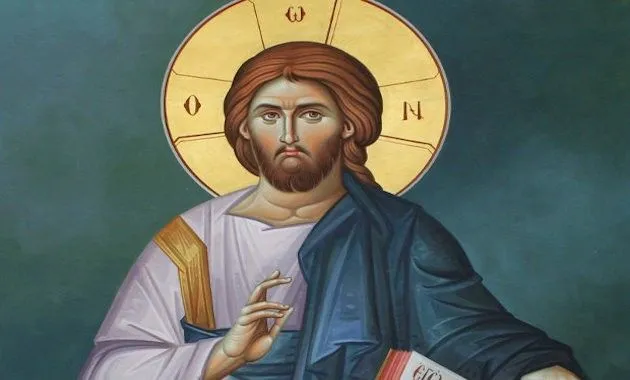The Orthodox Icon Projecting Lie: A Deep Dive into Truth and Tradition

Icons hold profound meaning in Orthodox Christianity, standing as more than mere religious art—they represent windows into the spiritual realm. Yet, a controversial debate has risen around the idea of “Orthodox Icon Projecting Lie,” questioning the authenticity, meaning, and cultural interpretation of these sacred images. This article will explore why some believe these icons project an untruth and examine the cultural and spiritual complexities around this concept.
| H2 Headings | H3 Subheadings |
|---|---|
| Introduction to Orthodox Icons | Historical Background of Icons |
| Purpose of Icons in Worship | |
| Understanding the Concept of “Orthodox Icon Projecting Lie” | Roots of the Controversy |
| Common Misconceptions | |
| The Theology Behind Icons | Iconography in the Bible |
| Iconoclasm and Its Influence | |
| Historical Significance of Orthodox Icons | Byzantine and Early Church Influence |
| Key Figures in Orthodox Iconography | |
| Cultural Interpretations of Icons | Variances Across Orthodox Regions |
| Eastern vs. Western Perspectives | |
| The Role of Icons in Spirituality | Enhancing Worship and Prayer |
| Icons as “Windows to Heaven” | |
| Misinterpretations and Myths | Are Icons Forms of Idolatry? |
| Addressing Common Criticisms | |
| Visual Symbolism in Orthodox Icons | Colors, Gestures, and Expressions |
| Hidden Meanings in Iconography | |
| The Art of Iconography | Process of Creating Icons |
| Importance of Tradition in Icon Art | |
| Icons and the Modern World | Resurgence of Icons in Contemporary Faith |
| Iconography in Western Churches | |
| The Role of Icons in Orthodox Worship | Icons as Part of Liturgical Practices |
| Daily Use of Icons in Orthodox Homes | |
| Addressing the “Lie” Argument | Arguments For and Against |
| Theological Defenses for Iconography | |
| The Psychological Impact of Icons | Icons and Personal Faith |
| Emotional Responses to Iconography | |
| Famous Orthodox Icons and Their Meanings | Icon of Christ Pantocrator |
| The Theotokos (Mother of God) Icon | |
| FAQs | What does “Orthodox Icon Projecting Lie” mean? |
| Why are icons significant in Orthodoxy? | |
| How are icons used in worship? | |
| Do Orthodox Christians worship icons? | |
| How does iconography differ in the West? |
Kaman Music Ovation Celebrity Acoustic Guitar CS247
Introduction to Orthodox Icons
Orthodox icons are vital to the Orthodox Christian faith, serving as spiritual representations of saints, Jesus Christ, the Virgin Mary, and various biblical events. These icons aren’t just decorative but serve as an essential medium for spiritual connection and reverence.
Historical Background of Icons
The origins of icons trace back to early Christianity, when Byzantine art first adopted Christian themes. Byzantine icons and mosaics became highly influential, serving as one of the first visual ways for Christians to experience and relate to their faith.
Purpose of Icons in Worship
In Orthodox Christianity, icons are viewed as conduits to the divine, aiding in prayer, contemplation, and deepened spiritual focus. Unlike statues, icons remain two-dimensional, signifying that they are not meant to be lifelike but to represent a transcendent reality.
Understanding the Concept of “Orthodox Icon Projecting Lie”
The idea of “Orthodox Icon Projecting Lie” often stems from concerns regarding the literal interpretation of icons and whether they misrepresent the spiritual truth they intend to portray. Some question if icons can authentically represent the sacred without crossing into the realm of idolatry or misrepresentation.
Roots of the Controversy
This controversy stems partly from iconoclasm, a movement that condemned the use of religious images. Though iconoclasm is no longer prevalent, remnants of its philosophy persist, particularly among those who question icons’ theological basis.
Common Misconceptions
A common misunderstanding is that Orthodox Christians worship icons. In truth, icons are venerated, meaning they are honored but not worshipped. Worship is reserved for God alone, while icons serve as visual aids to draw believers closer to God.
The Theology Behind Icons
Orthodox theology places a high emphasis on the role of images as reflections of heavenly realities. This is rooted in the doctrine of Incarnation, which asserts that Christ, as God in human form, legitimized the use of physical representations to illustrate divine mysteries.
Iconography in the Bible
While the Bible does caution against idols, it also features God-commanded artwork in places like the Ark of the Covenant. These sacred symbols are seen as biblical validation for the appropriate use of religious imagery.
Iconoclasm and Its Influence
The iconoclastic controversy of the 8th and 9th centuries was a significant period during which icons were outlawed within parts of the church. This history still influences perceptions today, leading some to view icons with suspicion.
Historical Significance of Orthodox Icons
Icons have been deeply ingrained in Orthodox tradition, especially during the Byzantine Empire, which elevated iconography to a sacred art form.
Byzantine and Early Church Influence
The Byzantine Empire played a pivotal role in defining and spreading Orthodox icons. This era saw the rise of iconography schools, dedicated to the meticulous production of these sacred images.
Key Figures in Orthodox Iconography
Important historical figures, like St. John of Damascus, championed the use of icons, defending them against accusations of idolatry and emphasizing their role as spiritual tools.
Cultural Interpretations of Icons
Different Orthodox communities approach icons with unique cultural perspectives. For instance, Greek Orthodox icons differ somewhat from Russian Orthodox icons in style, symbolism, and interpretation.
Variances Across Orthodox Regions
Icons in Eastern Europe, Russia, and Greece often carry unique attributes that reflect regional styles and cultural identity. This variety enriches the diversity of Orthodox iconography.
Eastern vs. Western Perspectives
Western churches have traditionally been more skeptical about icon use. This divergence highlights varying theological and cultural values within the Christian tradition.
The Role of Icons in Spirituality
Icons serve as “windows to heaven,” creating an intimate spiritual experience for Orthodox believers. They are believed to bridge the physical and spiritual worlds, providing a glimpse of divine grace.
Enhancing Worship and Prayer
During prayers, Orthodox Christians often face icons, asking for intercession and meditating on the lives of the saints represented. This practice fosters a profound spiritual connection, inspiring believers to emulate holy figures.
Icons as “Windows to Heaven”
Orthodox Christians perceive icons as more than artworks—they are spiritual windows that offer believers a unique sense of presence and closeness to God.
Misinterpretations and Myths
Several misconceptions surround Orthodox iconography, particularly regarding accusations of idolatry. These myths often stem from misunderstandings of Orthodox theology and practice.
Are Icons Forms of Idolatry?
No, Orthodox theology clarifies that icons are venerated, not worshipped. The distinction is essential and is based on the understanding that icons are not divine but are conduits to the divine.
Addressing Common Criticisms
Critics sometimes argue that icons misrepresent spiritual reality or distract from direct worship. Orthodox believers, however, see icons as aids that enhance their spiritual journey.
Visual Symbolism in Orthodox Icons
The symbolism within Orthodox icons is deliberate and intricate, with every color, gesture, and element representing deeper theological truths.
Colors, Gestures, and Expressions
For instance, gold backgrounds signify divine light, while red often represents martyrdom. Each symbol and gesture carries a specific meaning, adding layers to the visual storytelling of icons.
Hidden Meanings in Iconography
Orthodox icons are rich in hidden meanings, with subtle details revealing insights into the life of Christ, the saints, and significant biblical events.
The Art of Iconography
Creating an icon is an act of devotion. Iconographers often follow specific traditions, believing that these sacred images should reflect time-honored theological concepts.
Process of Creating Icons
Iconographers use traditional methods like egg tempera paint and wood panels, believing that these materials enhance the icon’s spiritual resonance.
Importance of Tradition in Icon Art
The process and design are handed down through generations, ensuring that each icon adheres to the same spiritual and artistic values.
Frequently Asked Questions
What does “Orthodox Icon Projecting Lie” mean?
The phrase suggests that some believe Orthodox icons convey a false representation of spiritual truths, questioning their authenticity.
Why are icons significant in Orthodoxy?
Icons serve as spiritual tools that draw believers closer to God, offering a visual representation of faith, inspiring prayer, and connecting them to the divine.
How are icons used in worship?
Icons are used as visual aids during prayer, liturgies, and private devotion, helping believers focus their thoughts on Christ, the saints, and holy events.
Do Orthodox Christians worship icons?
No, Orthodox Christians do not worship icons. They venerate them, showing respect without attributing divinity to them.
How does iconography differ in the West?
Western Christianity often employs different art forms and has traditionally viewed icons with more skepticism than Eastern Orthodox Christianity, which deeply integrates icons into worship practices.
Icons in Orthodox Christianity serve as revered symbols and windows into a greater spiritual reality. While the debate around the concept of “Orthodox Icon Projecting Lie” persists, icons remain a pillar of Orthodox worship and a profound expression of faith and tradition.



